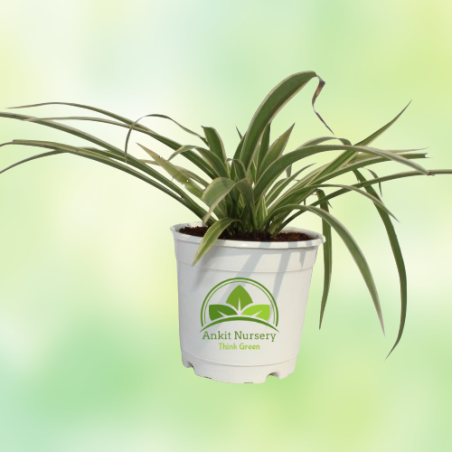
- -10%






Dracaena is a genus of tropical plants known for their attractive foliage and low maintenance requirements. Dracaena varieties include Dracaena marginata (Madagascar dragon tree), Dracaena fragrans (corn plant), Dracaena deremensis (Janet Craig), and Dracaena reflexa (Song of India), among others.
Most Dracaena varieties prefer bright, indirect light. They can tolerate lower light conditions, but too much direct sunlight can scorch their leaves. Place your potted Dracaena near a window where it can receive filtered sunlight or artificial light. Allow the top inch or two of soil to dry out before watering your potted Dracaena. Water thoroughly, allowing excess water to drain away from the pot's drainage holes.
Use well-draining potting soil for your potted Dracaena. A mix formulated for houseplants or tropical plants works well. Ensure the pot has drainage holes to prevent water from accumulating at the roots. Dracaenas prefer temperatures between 65-80°F (18-27°C) and moderate to high humidity levels. They can tolerate average indoor humidity but may benefit from occasional misting or placement near a humidifier, especially in dry indoor environments. Each variety has its own unique foliage characteristics and growth habits.
Feed your potted Dracaena with a balanced liquid fertilizer diluted to half strength every 4-6 weeks during the growing season (spring and summer). Reduce or stop fertilization in fall and winter when growth slows down. Prune your potted Dracaena as needed to maintain its size and shape. Remove any dead or yellowing leaves, and trim back leggy growth to encourage bushier growth. Avoid overwatering, as this can lead to root rot. In winter, reduce watering frequency.
Choose a pot with drainage holes that is slightly larger than the plant's root ball. Avoid pots that are too large, as they can retain excess moisture, which can lead to root rot. When repotting your Dracaena, gently loosen the roots and place the plant in the center of the new pot. Add fresh potting soil around the roots, firming it gently to provide support. Dracaena plants are toxic to cats, dogs, and other pets if ingested. Keep them out of reach of pets, and wash your hands after handling the plant. With proper care, your potted Dracaena can thrive and add beauty to your indoor space. Enjoy its lush foliage and low maintenance nature!
Aglaonema, commonly known as Chinese evergreen, is a popular houseplant appreciated for its...
The Croton Petra is a popular variety of Croton (Codiaeum variegatum) known for its colorful...
The Fiddle Leaf Fig (Ficus lyrata) is a popular and iconic houseplant known for its large,...
The Schefflera plant, often referred to as the Umbrella Tree or Schefflera arboricola, is a...
The "Ficus Long Island" is a variety of Ficus benjamina, commonly known as the Weeping Fig....
The money plant, also known as Devil's Ivy or Epipremnum aureum, is a popular indoor plant...
Ferns are a diverse group of plants known for their delicate, feathery foliage and are...
A water plant, also known as an aquatic plant or hydrophyte, is a type of plant that has...
Ravenea Palm Majesty Palm commonly known as Majesty Palm
Dieffenbachia, commonly known as dumb cane, is a popular ornamental plant prized for its...
Indoor plants are a great way to bring nature into your home, purify the air, and enhance your...
Red Sensation Cordyline, also known as Cordyline fruticosa 'Red Sensation' or Red Sensation...
Snake Plant Dracaena Trifasciata scientifically known as Sansevieria trifasciata, is not a...
The Green Aglaonema, scientifically known as Aglaonema commutatum, is a popular and...
The Dracaena Victoria is a cultivar of the Dracaena fragrans species, commonly known as the...
Golden Song of India is a common name for the plant known scientifically as Dracaena reflexa...